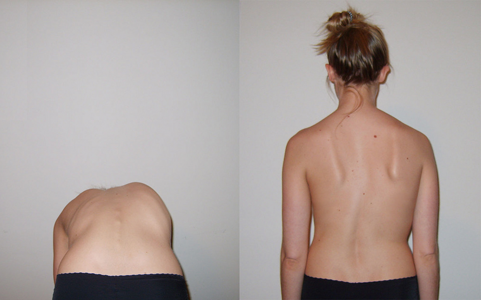Scoliosis: Understanding, Symptoms, and Treatment by Dr Saw Lim Beng
05 April 2019
What is Scoliosis?
Scoliosis is a condition where the spine or backbone becomes bent to the side, taking the shaped of an "S" or "C. This condition is commonly known as the S-shaped spine or C-shaped spine. Scoliosis typically developed in teenagers, and many parents are unaware of the condition until it reaches a more advanced stage, often with a pronounced bent back, crooked backbone or noticeable deformity with lower back aching pain.
Symptoms of Scoliosis
Scoliosis usually develops during the adolescent stage, starting just before a child experiences a growth spurt. The curvature of the spine progresses rapidly during this period and slows or stops once the child reaches bone maturity. Both boys and girls can be affected, but girls tend to have more severe curvature. Scoliosis can also affect young toddlers and infants.
The symptoms of lower back strain develops gradually, and in the early stages, you might notice a slight imbalance in the shoulder levels, with the right shoulder often being higher than the left. A subtle bulge may appear on the back of the right chest, though this can occasionally happen on the left, but it is rare.
As the condition progresses, the hump or bulge on the back becomes more prominent, and the body starts to tilt to one side. In cases where the curve is in the lower spine, the pelvis may be tilted, particularly when walking. This can create the false impression that the child has one leg shorter than the other.
Causes of Backache and Risk Factors
Scoliosis is most commonly linked to congenital conditions, although this type occurs in only a minority of cases. Patient with congenital scoliosis often exhibit backbone curve from infancy. Another cause is neuromuscular scoliosis, which results from defects in the nerves or muscles.
In many cases, the cause of scoliosis is unknown, and this form is called idiopathic scoliosis. It typically develops during puberty, even though the child appeared normal in early childhood. Idiopathic scoliosis is the most common type, contributing to around 80 percent of all diagnosed cases.
Diagnosisng Scoliosis and Lower Back Aching Pain
Scoliosis can be easily diagnosed by having the child bend forward to detect any hump on the back. Alternatively, a simple spine X-ray can identify even mild deformities and help doctors measure the severity of the curve.
Once scoliosis is detected, a detailed assessment is necessary to determine the underlying cause (congenital, neuromuscular, or idiopathic). If congenital scoliosis is diagnosed, further tests may be needed to check for associated heart or kidney problems. The doctor will also assess the child's maturity to predict whether the curve will worsen or has stabilised.
Treatment Options for Scoliosis and Pain Relief for Back
Treatment for scoliosis depends on two main factors: the severity of the curve and the maturity of the patient. For curves that are smaller than 30 degrees, doctors often take a ‘wait and see’ approach. During this time, physiotherapy or specific exercises may be recommended to help manage the condition. If the curve does not worsen, the doctor will continue monitoring the patient until they reach maturity.
Surgical vs Non-Surgical Scoliosis Treatment
For younger patients with significant potential for growth, more aggressive treatments may be necessary. This can include bracing or, in more severe cases, surgery when the curvature exceeds 30 degrees. For children who have completed bone growth, the condition is typically stable, and the intervention is only required if the curvature exceeds 45 degrees on an X-ray.

Early detection of scoliosis is important because it allows for treatment that can prevent the condition from worsening and potentially requiring surgery. Not to mention, it can also help prevent chronic lower back aching pain, provide pain relief, and allow for an active lifestyle later in life.
If you have any questions regarding scoliosis or are concern if you're suffering from one, visit our Orthopaedic & Trauma Surgery Department to make an appointment.






